The synergistic catalysis on Co nanoparticles and CoNxsites of aniline-modified ZIF derived Co@NCs for oxidative esterification of HMF
2021-05-14ToRuiGuoPingLuXinZhoXunCoZhongChen
To Rui,Guo-Ping Lu,,*,Xin Zho,Xun Co,Zhong Chen,*
a School of Chemical Engineering, Nanjing University of Science & Technology, Nanjing 210094, China
b School of Materials Science & Engineering, Nanyang Technological University, Singapore 639798, Singapore
ABSTRACT An efficient, sustainable and scalable strategy for the synthesis of porous cobalt/nitrogen co-doped carbons(Co@NCs)via pyrolysis of aniline-modified ZIFs,has been demonstrated.Aniline can coordinate and absorb on the surface of ZIF (ZIF-CoZn3-PhA), accelerate the precipitation of ZIFs,thus resulting in smaller ZIF particle size.Meanwhile,the aniline on the surface of ZIF-CoZn3-PhA promotes the formation of the protective carbon shell and smaller Co nanoparticles, and increases nitrogen content of the catalyst.Because of these properties of Co@NC-PhA-3, the oxidative esterification of 5-hydroxymethylfurfural can be carried out under ambient conditions.According to our experimental and computational results, a synergistic catalytic effect between CoNxsites and Co nanoparticles has been established, in which both Co nanoparticles and CoNxcan activate O2while Co nanoparticles bind and oxidize HMF.Moreover,the formation and release of active oxygen species in CoNxsites are reinforced by the electronic interaction between Co nanoparticles and CoNx.
Keywords:Aniline-modified ZIF Porous cobalt/nitrogen co-doped carbon Synergistic catalysis on CoNxsites and Co nanoparticles Oxidative esterification 5-Hydroxymethylfurfural
5-Hydroxymethylfurfural(HMF)derived from carbohydrates or cellulose by dehydration,has been used to bridge the gap between lignocellulosic biomass and some useful chemicals [1–3].One particularly useful transformation of HMF is its oxidation to 2,5-furandicarboxylicacid (FDCA), one of the top-10 biobased products from biorefinery carbohydrates[4].FDCA can be used as a monomer for biopolymers that can replace the fossil fuel-derived polyethylene terephthalate (PET) [5].However, there are difficulties in its direct application in industry due to its low solubility in most solvents and lack of economic methods for its purification[6].2,5-Furan dicarboxylicacid dimethyl ester (FDMC) has good solubility in lots of solvents, which can also be used directly to synthesize biopolymers through transesterification reaction [7].Thus, FDMC is an ideal alternative to FDCA.
This transformation is usually catalyzed by noble metals (Au,Pd) with the help of high pressure or excess bases [8–11].A few earth-abundant-metal catalysts have also been explored,but high temperature and O2pressure are needed,and the selectivity is still poor in some cases [12–14].To further optimize the reaction conditions, some multi-metal catalysts including CoxOy-N@C/Ru@C,PdCoBi@C,AuPd-Fe3O4have been developed[15–17].More recently,Co,N-codoped carbon materials were foundto be a kind of efficient earth-abundant metal catalysts for the oxidative esterification of HMF under base-free conditions [18–22].Lin and Zeng suggested that cobalt nanoparticles(Co NPs)activated by the Mott-Schottky effect may be the main catalytic active sites [21,22].In general,there are two potential catalytic active centers:Co NPs and CoNxsites in Co@NCs.Eisenberg et al.have proposed a new concept of “active doughnut” in which the Co NPs and CoNxactivate O2while Co NPs bind and oxidize alcohol[23,24].Meanwhile,Hu has demonstrated that the electronic interactions between Fe NPs and FeN4coordination structure in Fe@NCs favor the adsorption of O2[25].Along this line, we envisage that there is a synergistic catalytic effect between CoNxsites and Co NPs of Co@NCs for oxidative esterification of HMF, which has not been addressed by any reports so far.
Compared with other materials, zeolitic imidazolate frameworks(ZIFs)serve as ideal precursors for the formation of Co@NCs owing to their low-cost raw materials, mild synthetic conditions,high nitrogen content, and tunable and uniform pore apertures[26].Zinc as a self-sacrificialtemplate is also introduced to eliminate the aggregation of Co nanoparticles and improve the specific surface areas of Co@NCs during the pyrolysis of ZIFs[27,28].In addition,the synthesis of ZIFs can be achieved in water,which not only avoids the use of toxic organic solvents, but also helps to save costs of ZIFs [29–33].There are a few scattered reports mentioning that the reactant concentration and the use of modulators(amino acids,butylamine,CTAB)can affect the particle size and morphology of ZIFs[34–36].Accordingly, we expect that(1)the use of different amines as the modulators may change both morphology and size of ZIFs in water; (2) amines may adsorb on the surface of ZIFs to form a protective carbon shell after carbonization; (3) some of the Co@NCs derived from aminemodified ZIFs may possess excellent catalytic performance for oxidative esterification of HMF due to their controllable size and morphology or protective carbon shell.
With our interestsin exploring the novel ZIF-derived Co@NCs for organic transformations [19,28,37], we demonstrate an efficient, sustainable and scalable strategy for the synthesis of Co@NCs, in which ZIFs as the precursors, are prepared in water solution using aniline as the modulators.Aniline can significantly affect the size of the ZIFs by adsorbing on the surface of ZIFs and increasing the precipitation of ZIFs.Co@NC-PhA-3 exhibits excellent catalytic performance for oxidative esterification of HMF,which is ascribed to its high BET surface areas,the existence of carbon shell on smaller Co NPs,higher N content and synergistic catalytic effect between its CoNxsites and Co NPs.
We started the investigation by employing different amines in the synthesis of ZIF-CoZnX-Y(X denotes the mole ratio of Zn/Co,Y the type of amine shown in Fig.S1 in Supporting information) in water.These ZIFs were then pyrolyzed at 900with a heating rate of 5/min for 2 h under pure Ar atmosphere to afford the corresponding Co@NC-Y-X(Fig.S1).Generally,the yields of ZIFs in water are higher than that in MeOH.For example,the yield of ZIFCoZn3-PhA is higher than 450 mg (2 mmol scale), but the yield of ZIF-CoZn3-M (Table 1) is less than 250 mg even with prolonged reaction time to 24 h.
As shown in Fig.1,spherical ZIFs were obtained in the presence of amine or in methanol with different particle sizes (Figs.1a–d and f), while irregular flake and rod ZIFs were yielded in the absence of amine (Fig.1e).The order of the particle sizes of ZIFs is ZIF-CoZn3-PhA Table 1 The naming rules and correspondence of ZIFs and Co@NCs. Fig.1.SEM images of(a)ZIF-CoZn3-PhA,(b)ZIF-CoZn3-OA,(c)ZIF-CoZn3-nBuA,(d)ZIF-CoZn3-BnA, (e) ZIF-CoZn3, (f) ZIF-CoZn3-M. According to the powder XRD patterns (Fig.S4a in Supporting information), six peaks belonging to the {100},{11-1}, {2-10}, {200}, {2-11}, {111} planes were detected in the ZIF-CoZn3-M (polyhedron, Fig.1f) [29].Additionalpeaks were present in the cases of ZIF-CoZn3(flat rod,Fig.1e),ZIF-CoZn3-Y(sphere, Figs.1a–d).Similarly, six peaks were found in ZIF-CoZn3-Y, but the peak intensity is different from the ZIF-CoZn3-M.Therefore, we demonstrate that amines may change the ratio of crystal faces in ZIFs by coordination with metal ions or absorption on the surface of ZIFs,modifying their size and morphology [35,36,39–41]. As shown in IR spectra, signals of amine (aniline and oleylamine) were observed in both ZIF-CoZn3-PhA and ZIFCoZn3-OA(Fig.S4b in Supporting information),while benzylamine and n-butylamine were removed from corresponding ZIFs owing to their good solubility in water (Fig.S3a).The poor solubility of aniline and oleylamine results more amines absorbed on the surface of ZIFs,which may suppress ZIF particle growth and result in smaller ZIF particles than ZIF-CoZn3-BnA and ZIF-CoZn3-nBuA.Furthermore, the red shift of N—H stretch of aniline (Fig.S4b in Supporting information) suggests the metal ions (Co2+or Zn2+)may coordinate with aniline, which explains why ZIF-CoZn3-PhA has the smallest ZIF particle size. The topography of amine-modified ZIFs derived Co@NC-Y-3 was also assessed by SEM observation.The morphology of ZIFs can be preserved with partial shrinkage after calcination (Figs.S5a–d in Supporting information).In the cases of Co@NC-3 and Co@NC-M-3(Figs.S5e and f in Supporting information),the structure of ZIFs is destroyed after sintering.The high treatment temperature(900)is necessary, because it not only promotes the evaporation of Zn,resulting in higher surface areas of Co@NCs,but also facilitates the formation of carbon with high graphitizationthat is beneficial to the electronic interactions in Co@NCs. After the successful preparation of these Co@NCs, we investigated the catalytic performance of these materials for oxidative esterification of HMF (Fig.2).It can be concluded that the use of amine type and the molar ratio of Zn/Co in the synthetic process have an obvious influence on the catalytic performance of Co@NCs.Moderate yields of FDMC was achieved at room temperature under air atmosphere (1 atm) when Co@NC-PhA-3 and Co@NC-OA-3 were employed as thecatalysts.Excellent yields of FDMC (92%)could be realized by increasing the amount of catalyst to 20 mg and prolonging the reaction time to 48 h. Fig.2.The effect of preparation process parameters of Co@NCs:(a)amine type and(b)the molar ratio of Zn/Co on catalytic performance for oxidative esterification of HMF.Conditions: HMF 0.3 mmol, Co@NCs (a) 10 mg or (b) 20 mg, MeOH 3 mL, O21 atm, 25(a) 24 h or (b) 48 h; GC yields with anisole as an internal standard. Compared with previous works (Table S2), Co@NC-PhA-3 exhibited superior catalytic performance.To the best of our knowledge,this is the first example on the oxidative esterification of HMF under ambient conditions using a non-noble metal catalyst. Encouraged by the excellent performance of Co@NC-PhA-3,we carried on to investigate the structure-effect relationship between Co@NCs and the reactions. As shown in Fig.3, both amine type and molar ratio of Zn/Co have significant influences on the BET surface areas of Co@NCs,which affect the yield of FDMC.With smaller particle size of Co@NCs, the corresponding higher BET surface area can enhance the yield of FDMC owing to the improvement of the interaction between catalyst and reactant (Fig.3a).Increasing the amount of zinc results in larger BET surface area due to the evaporation of Zn(Fig.3b),but it also reduces the amount of Co inCo@NCs(Table S3 in Supporting information).Among all specimens, Co@NC-PhA-3 provides the best result. As a girl, all the fresh things can attract their eyes. Yeah. This time curiosity17 can t kill a cat. When coming back, the first thing we want to do is chatting. Talking about all the things in high school. From the talk, I know all the dorm mates are ambitious and they are eager to achieve their own goals. In fact, all the days are almost the same, we didn t know if there were any fresh things in college life except making boyfriend (Just joking here, of course, we have never been so simply). Everyday, except chatting just chatting, maybe some study for the scholarship. And the term passed quickly. You must be strange isn t there any contradiction18 among you and your dorm mates? It s true that we do have. But it won t last several days. (Very happy, isn t it?) The TEM images of Co@NCs are shown in Fig.4.The average Co nanoparticle size of Co@NC-PhA-3 is the smallest than all other Co@NCs (Figs.4a–e, Table S4 in Supporting information).No obvious Co nanoparticles are found in Co@NC-PhA-9 (Fig.4f)owing to its low Co content (Table S3). A carbon shell on Co nanoparticles was observed in the case of Co@NC-PhA-3 (Fig.4a).It may be derived from the mixture of aniline and 2-methylimidazole.Its presence is conducive to the effective protection of active cobalt nanoparticles from leaching,and inhibitive to the aggregation of cobalt nanoparticles.In the view of BET and TEM results, Co@NC-PhA-Co has low BET surface area(Fig.3b)and large Co NPs(Fig.4e),thus it shows no reactivity. Fig.3.The relationship between yields (purple points) of FDMC (or BET surfaces areas of Co@NCs(brown square))with different preparation process parameters of Co@NCs: (a) amine type; (b) molar ratio of Zn/Co.Conditions: HMF 0.3 mmol,Co@NCs(a)10 mg or(b)20 mg,MeOH 3 mL,O21 atm,25(a)24 h or(b)48 h;GC yields with anisole as an internal standard. The HRTEM images further verify the existence of the carbon shells (Figs.5a and b).The clear lattice fringes of 0.205 nm,0.215 nm and 0.356 nm were observed from the HRTEM image of Co@CN-PhA corresponding to Co (111), Co (100) and graphite respectively(Fig.5b)[42,43].The results of TEM-EDS indicate that Co@NC-PhA-3 mainly contains C, O, N, Zn and Co elements, and most of cobalt element is from Co NPs.(Fig.5c).The residual zinc in the catalyst can increase Lewis basic sites and decrease the strong Lewis acidic sites, which can improve the performance of the catalyst [20]. In order to further check the elemental composition and chemical state, the XRD (Fig.S6 in Supporting information) and XPS results of Co@NCs (Fig.6) were studied.Characteristic diffraction peaks observed at 44.451.6and 75.9could be attributed to fcc-structured Co(111), Co(200) and Co(220) planes respectively [43].The weak diffraction peaks of hcp-structured Co(100) (or Co2C) and Co(101) correspond to the shifts in 41.5and 48.4[44,45].No obvious diffraction peak of metal is found in the cases of Co@NC-PhA-9 owing to its low Co content.It can also be found that the intensity of Co signal is inversely proportional to the Zn/Co molar ratio.Meanwhile, the structure of Co NPs tends to disorder by increasing the Zn/Co molar ratio. The XPS also proves that Co@NC-PhA-3 mainly contains C,O,N,Zn and Co elements(Fig.S7 in Supporting information).CoNxsites exist in the material based on the N 1s region of XPS spectra(Fig.6b)[23].Because cobalt phthalocyanine(PcCo)has CoN4sites,the single of CoNxcan be further confirmed by comparison of XPS N 1s region of PcCo and Co@NC-PhA-3 (Fig.S8b in Supporting information) [25].According to XPS results, the N content of Co@NC-PhA-3 is higher than Co@NC-M-3(Table S5 in Supporting information), presumably owing to the presence of aniline in the surface of ZIF-CoZn3-PhA, which is not only an N source but also promote the formation of carbon shell around Co NPs.The high N content can enhance the Co NPs performance by the Mott-Schottky effect for the oxidative esterification of 5-hydroxymethylfurfural[21,22]. Fig.4.TEM images of (a) Co@NC-PhA-3, (b) Co@NC-OA-3, (c) Co@NC-3, (d)Co@NC-M-3, (e) Co@NC-PhA-Co, (f) Co@NC-PhA-9. Fig.5.(a, b) HRTEM images of Co@NC-PhA-3; (c) TEM and its corresponding element mapping images of Co@NC-PhA-3. To clarify the catalytically active sites of Co@NC-PhA-3 for this reaction,several controlled experiments were carried out(Fig.7).Firstly,the catalyst was leached with acid(1 mol/L HCl,120,12 h)to remove Co NPs, denoted as Co@NC-PhA-3A.The TEM and XRD results suggest that no obviously Co NPs are found in Co@NC-PhA-3A (Fig.S9 in Supporting information).A remarkable decrease in yield of FDMC (19%) was observed using Co@NC-PhA-3A as the catalyst,which suggests Co NPs in Co@NC-PhA-3 are necessary for the reaction.It is well known that SCN-can poison MNxsites in catalysis [25,46].The yield of FDMC was poor (29%) when both Co@NC-PhA-3 and NaSCN (10 mol%) were used, indicating that CoNxsites can boost the reaction. Notably, naked Co NPs and Co@AC as the analogs of Co NPs in Co@NC-PhA-3 failed to yield the final product.As shown in Fig.S10(Supporting information), the naked Co NPs have irregular shape and large size(>150 nm),and the Co NPs mainly on the surface of AC are easy to aggregate and disappear in the case of Co@AC,which can explain the poor catalytic performance of naked Co NPs and Co@AC.Moreover only trace of FDMC was obtained when PcCo was used as the analog of CoNxin Co@NC-PhA-3.These results demonstrate the crucial roles of N-doped porous carbon with high graphitization for the reaction,which may promote the absorption and activation of reactants, improve the catalytic performance of Co sites, and enhance the interaction between Co sites and reactants [18–20]. Based on these results, we can safely conclude that there is a synergistic catalytic effect between CoNxsites and Co NPs in Co@NC-PhA-3 for the reaction.According to the XPS results(Fig.6a, Fig.S8 and Table S6 in Supporting information), The binding energy of CoIIand CoIIIin Co@NC-PhA-3 shift to a lower value compared with PcCo and Co@NC-M-3, implying Co NPs transfer the electron to CoNx. Three simple models CoN4, Co6O2and CoN4-Co6O2were established which represent CoNx, Co NPs and Co@NC-PhA-3 respectively (Fig.8).The electron number of Co in CoN4was calculated from baderde composition of charge density.It is found that adding of Co6O2to CoN4can increase the electron number of Co in CoN4, thus supporting that Co NPs transfer the electron to CoNx. To further verify the synergistic catalytic effects of CoNxsites and Co NPs,the adsorption energies(Eads)of 2-hydroxymethylfurane (FM) and O2on different Co sites in all three models are calculated (Fig.9).Cased on these calculations, we are able to conclude that(1)Both the Eadsof O2and FM on Co6O2are stronger than CoN4.(2)Too strong Eadsof O2on Co6O2may be harmful to the release of active oxygen species, resulting in the oxidation of Co6O2.Thus CoN4may be the better sites for the activity of O2due to its weak Eadsof O2[25].(3) The electron transfer from C6O2to CoN4can enhance the electron transfer from CoN4to O2and reduce the Eadsof O2which are beneficial to the formation and release of active oxygen species[22,47].(4)The huge difference in Eadsof FM between Co6O2and CoN4suggests that the absorption of FM mainly takes place on Co6O2. Considering all above results,the tentative synergistic catalysis by CoNxand Co NPs for α-C-H dissociation of alcohol that is the rate determination step in the oxidative esterification of HMF[18–20],was illustrated in Fig.S11 (Supporting information).Both Co NPs and CoNxin Co@NC-PhA-3 can activate O2while Co NPs bind and oxidize alcohol owing to that the absorption of alcohol mainly takes place on CoNPs.Meanwhile, the electron transfer from Co NPs to CoNxis beneficial to the formation and release of active oxygen species. Fig.6.XPS spectra of (a) Co 2p3/2and (b) N 1s of Co@NC-M-3, Co@NC-PhA-3,Co@NC-PhA-9. Fig.7.Comparison of catalytic performance over different catalysts for the oxidative esterification of HMF.Co@NC-PhA-3A means Co@NC-PhA-3 leaching with acid;Co@NC-PhA-3S means the use of Co@NC-PhA-3 with NaSCN(10 mol%);Co@AC meansactive carbon supported Co nanoparticles; PcCo means cobalt phthalocyanine; Co NPs means naked Co nanoparticles. The reusability of Co@NC-PhA-3 was also been studied(Fig.S13a in Supporting information).This material could be reused for at least six times without significant loss of catalytic activity.The ICP,TEM,SEM and XPS results of Co@NC-PhA-3 after six cycles(Fig.S12 and Table S3 in Supporting information)suggest that(1)the cobalt leaching was negligible;(2)the shape and size of carbon and cobalt particles were well reserved; (3) no obvious valence change on the surface of Co in Co@NC-PhA after six cycles wasobserved.The heterogeneous nature of the catalyst was demonstrated by a filtration experiment (Fig.S13b in Supporting information).The catalyst was filtered off after 12 h at room temperature, and the isolated solution was allowed to react for a further 36 h.No further increase in yield was observed. Fig.8.Three calculation models of (a) CoN4, (b) Co6O2and (c) CoN4-Co6O2and electron number of Co in CoN4.Brown is C; red is O; blue is Co; silver is N. Fig.9.The adsorption energies of 2-hydroxymethylfurane(FM)and O2on different Co sites.FM on (a) CoN4, (b) Co6O2, (c) CoN4of CoN4-Co6O2, (d) Co6O2of CoN4-Co6O2;O2on(e)CoN4,(f)Co6O2,(g)CoN4of CoN4-Co6O2,(h)Co6O2of CoN4-Co6O2.Brown is C; red is O; blue is Co; silver is N. In summary, we have developed an efficient, sustainable and scalable strategy for the synthesis of porous Co@NCs using anilinemodified ZIFs as the precursor.Aniline can coordinate and absorb on the surface of ZIFs, and accelerate the precipitation of ZIFs, by which smaller particle size of ZIF (ZIF-CoZn3-PhA) are obtained.Notably, several excellent properties of Co@NC-PhA-3 including higher specific surface area,the protective carbon shell of smaller Co NPs and higher the nitrogen content.These are attributed to aniline on the surface of ZIF-CoZn3-PhA, and can enhance the performance of the catalyst.Co@NC-PhA-3 exhibits promising performance and recyclability for base-free oxidative esterification of HMF.Based on our characterization, experiments and calculations,a synergistic catalytic effect between CoNxsites and Co NPs has been disclosed.Both Co NPs and CoNxactivate O2while Co NPs bind and oxidize HMF.Meanwhile, the electron transfer from Co NPs to CoNxis beneficial to the formation and release of active oxygen species. Declaration of competing interest The authors declare that they have no known competing financial interests or personal relationships that could have appeared to influence the work reported in this paper. Acknowledgments We gratefully acknowledge the Fundamental Research Funds for the Central Universities(No.30920021120)and Key Laboratory of Biomass Energy and Material, Jiangsu Province (No.JSBEM201912) for financial support.This work was a project funded by the Priority Academic Program development of Jiangsu Higher Education Institution.We also thank Analysis and Test Center Nanjing University & Technology for the help in obtaining the IR and XRD date. Appendix A.Supplementary data Supplementary material related to this article can be found, in the online version, at doi:https://doi.org/10.1016/j.cclet.2020.06.027.
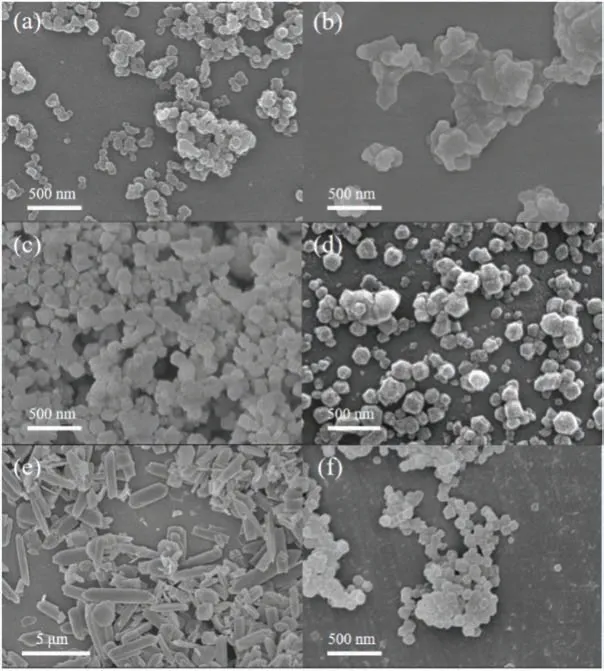
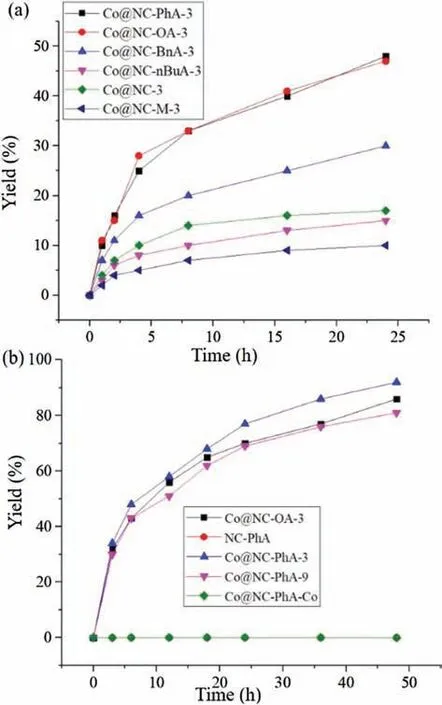

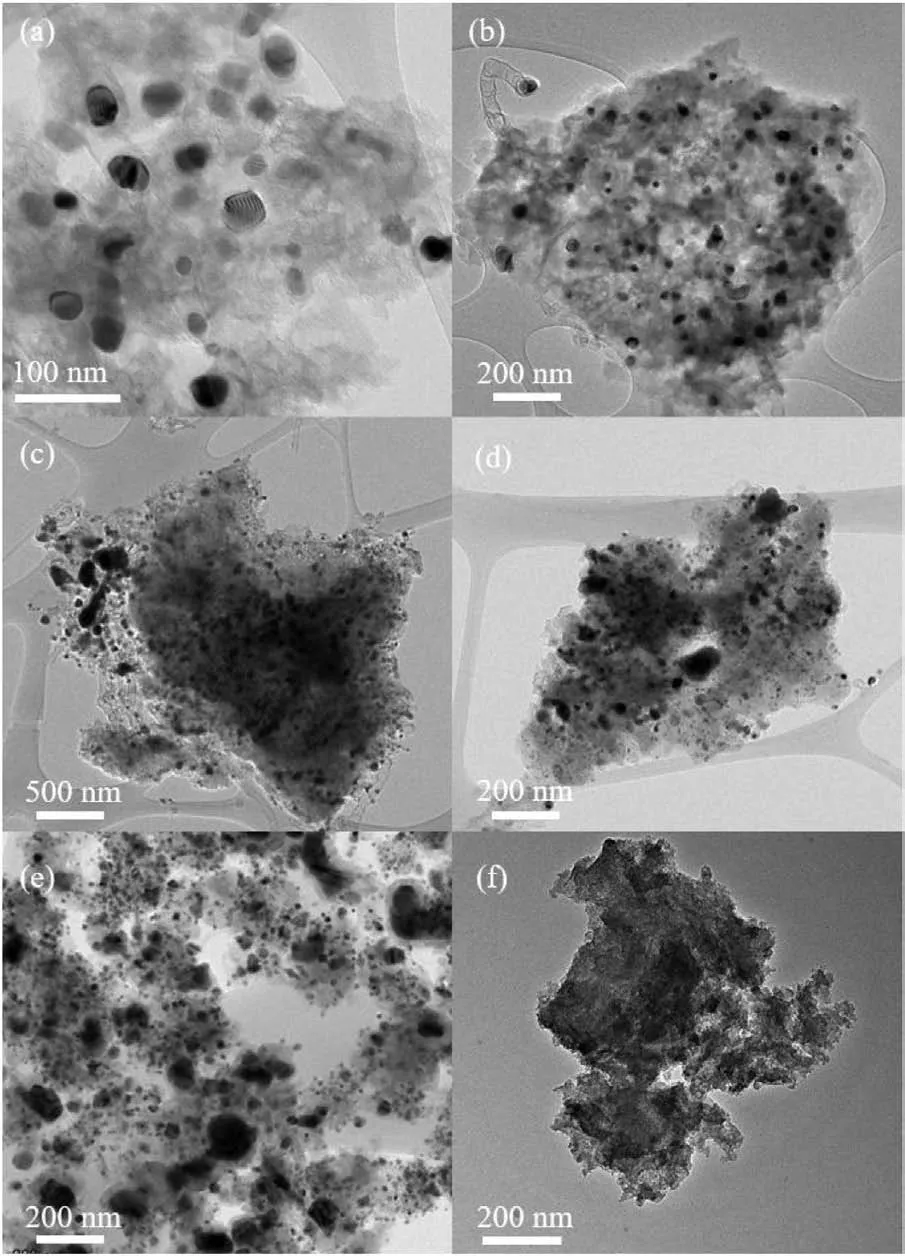
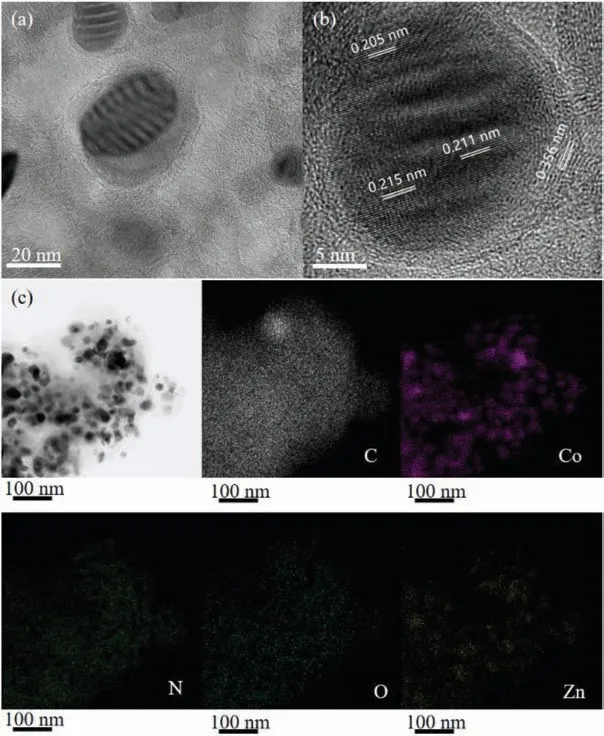
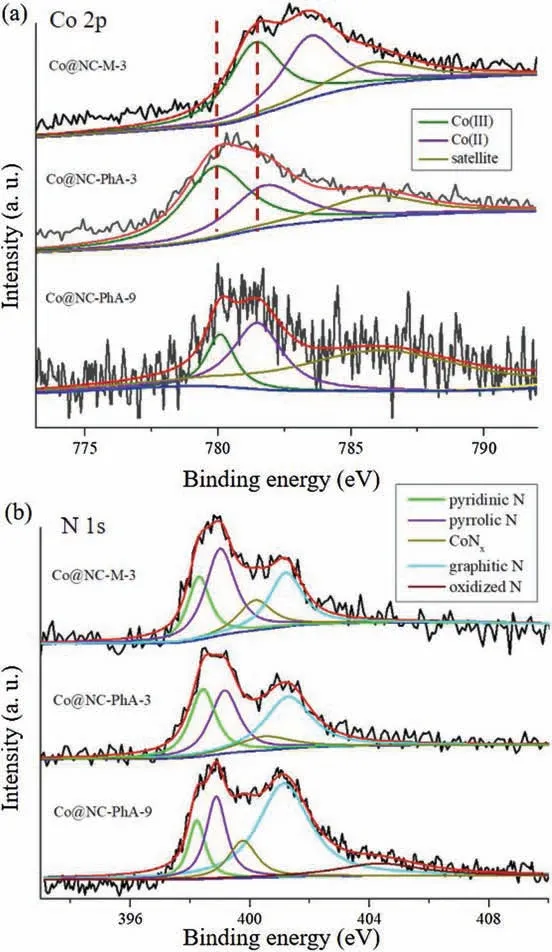
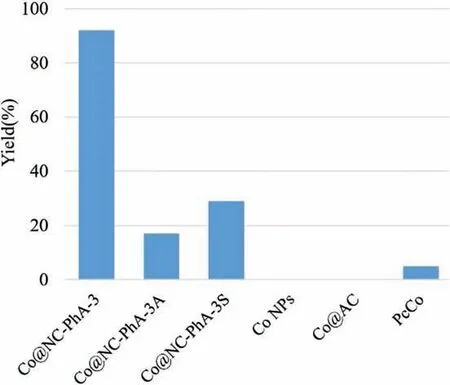
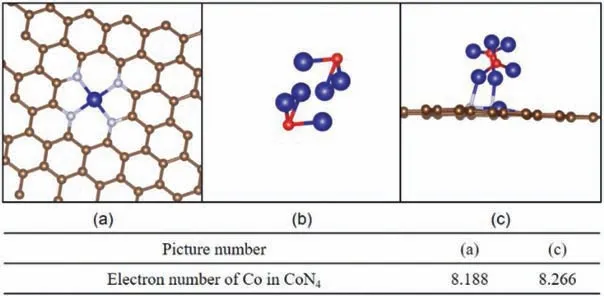
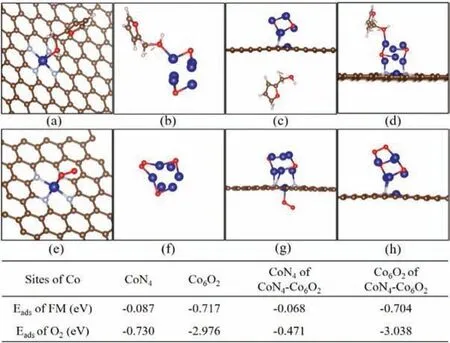
杂志排行
Chinese Chemical Letters的其它文章
- Quantitative assessment of rhodamine spectra
- Copper-cobalt-nickel oxide nanowire arrays on copper foams as self-standing anode materials for lithium ion batteries
- Design of activatable red-emissive assay for cysteine detection in aqueous medium with aggregation induced emission characteristics
- An aqueous zinc-ion hybrid super-capacitor for achieving ultrahigh-volumetric energy density
- Assembly and packing models of [Ti6Co12] ring based on the titanium-capped cobalt clathrochelates
- A stable Co(II)-based metal-organic framework with dual-functional pyrazolate-carboxylate ligand: Construction and CO2selective adsorption and fixation
